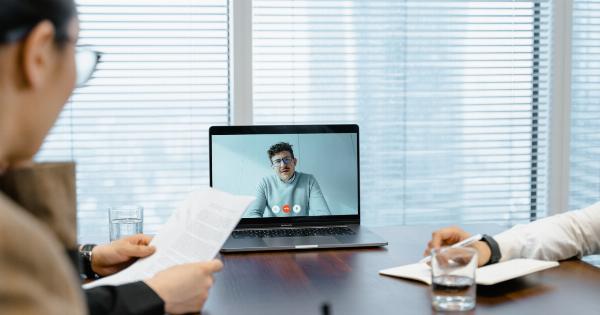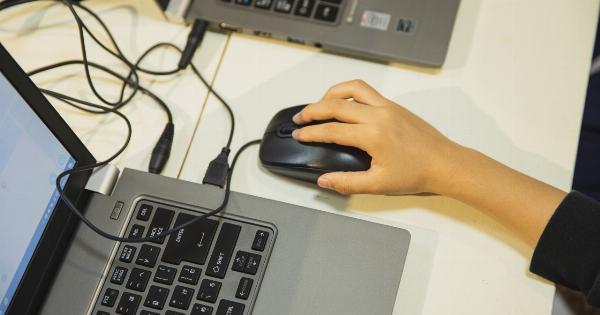The pandemic forced schools across the globe to shut down, and students had to learn from home. While schools gradually reopened in 2021, many children still continued to learn remotely.
However, recent statistics suggest that remote learning has taken a toll on our children’s education.
As we move forward, we must prioritize our children’s education. We must invest in their future by sending them back to school and providing them with the resources they need to thrive.
Challenges of Remote Learning
The pandemic led to a sudden shift to remote learning, and while it may have been a temporary solution, it has had long-lasting effects on our children’s education.
Remote learning has presented several challenges that students and teachers had to overcome, including:.
1. Limited Access to Technology
Many families do not have access to reliable technology at home. The sudden transition to remote learning meant that some children did not have access to computers, laptops or tablets to attend virtual classes.
The lack of access has been a major barrier to learning and has put these students at a disadvantage.
2. Limited Interaction with Teachers and Peers
Remote learning has isolated our children, and they have had limited interaction with their teachers and peers. This has made it difficult to ask questions, participate in discussions, and get feedback on their work.
In-person learning allows for better interaction between students and teachers, leading to better academic outcomes.
3. Limited Access to Extra-curricular Activities
Most schools offer extra-curricular activities such as sports, music and drama clubs.
However, remote learning has limited access to these activities, leading to a lack of socialization, physical activity, and creativity, which are vital for a well-rounded education.
4. Reduced Quality of Education
Remote learning has also led to a reduction in the quality of education, with many students experiencing a drop in academic performance. Children thrive in an environment that fosters learning, creativity, and socialization.
They require the guidance and support of well-trained teachers who help unlock their potential.
The Importance of In-person Learning
Going back to school is crucial for many reasons. In-person learning has numerous benefits to our children that cannot be achieved through remote learning. They include:.
1. Better Learning Environment
In-person learning offers a better learning environment that is conducive to learning. Classrooms are structured, and teachers can provide personalized instruction. Students can ask questions, participate in discussions, and get feedback on their work.
These interactions lead to better academic outcomes.
2. Enhanced Socialization Skills
Children need socialization to develop their social skills. In-person learning allows children to interact with other students and teachers, which fosters the development of communication, interpersonal, and collaboration skills.
These skills are essential in today’s society, and the lack of socialization can significantly impact their future success.
3. Access to Extra-curricular Activities
In-person learning provides access to a wide range of extra-curricular activities that promote creativity, physical activity, and socialization.
These activities help students to develop their passions, interests, and talents, which enhance their overall educational experience. They also provide an opportunity for students to build their confidence and self-esteem.
4. Safe Learning Environment
Schools have implemented several safety protocols to ensure that students are safe while attending in-person learning. These measures include social distancing, wearing masks, and regular cleaning and disinfecting of facilities.
Parents can rest assured that their children are safe while attending school.
Investing in Our Children’s Future
Now is the time to invest in our children’s future. We must prioritize their education and ensure that they have access to quality education.
Investing in our children’s future will prepare them for success, not only academically, but also in life. Some of the ways we can invest in our children’s future include:.
1. Supporting Our Schools
We must support our schools by ensuring that they have the resources they need to provide quality education. Parents can volunteer at school, attend parent-teacher conferences, and provide feedback to teachers and administrators.
We can also support our schools financially through donations to school programs and organizations.
2. Providing Access to Technology
Access to technology is critical for education in today’s society. We must ensure that all students have access to reliable technology at home and school.
We can do this by providing computers, laptops, and tablets to students who do not have access to them. We can also support schools in upgrading their technology resources to better serve their students.
3. Supporting Teachers
Teachers play a critical role in our children’s education. We must support them by providing them with the necessary resources and tools. We can also advocate for higher pay and benefits for teachers.
Teachers who are well-trained, supported, and motivated are more effective at educating our children.
4. Prioritizing Education in the National Budget
Education should be a top priority in the national budget. We can advocate for more funding for education programs, teacher training, and school infrastructure. We can also advocate for policies and legislation that promote education.
Conclusion
Investing in our children’s education is crucial for their future success. Returning to in-person learning is essential for their academic, social, and emotional development.
By providing our children with access to quality education, we are preparing them for success in life.






























